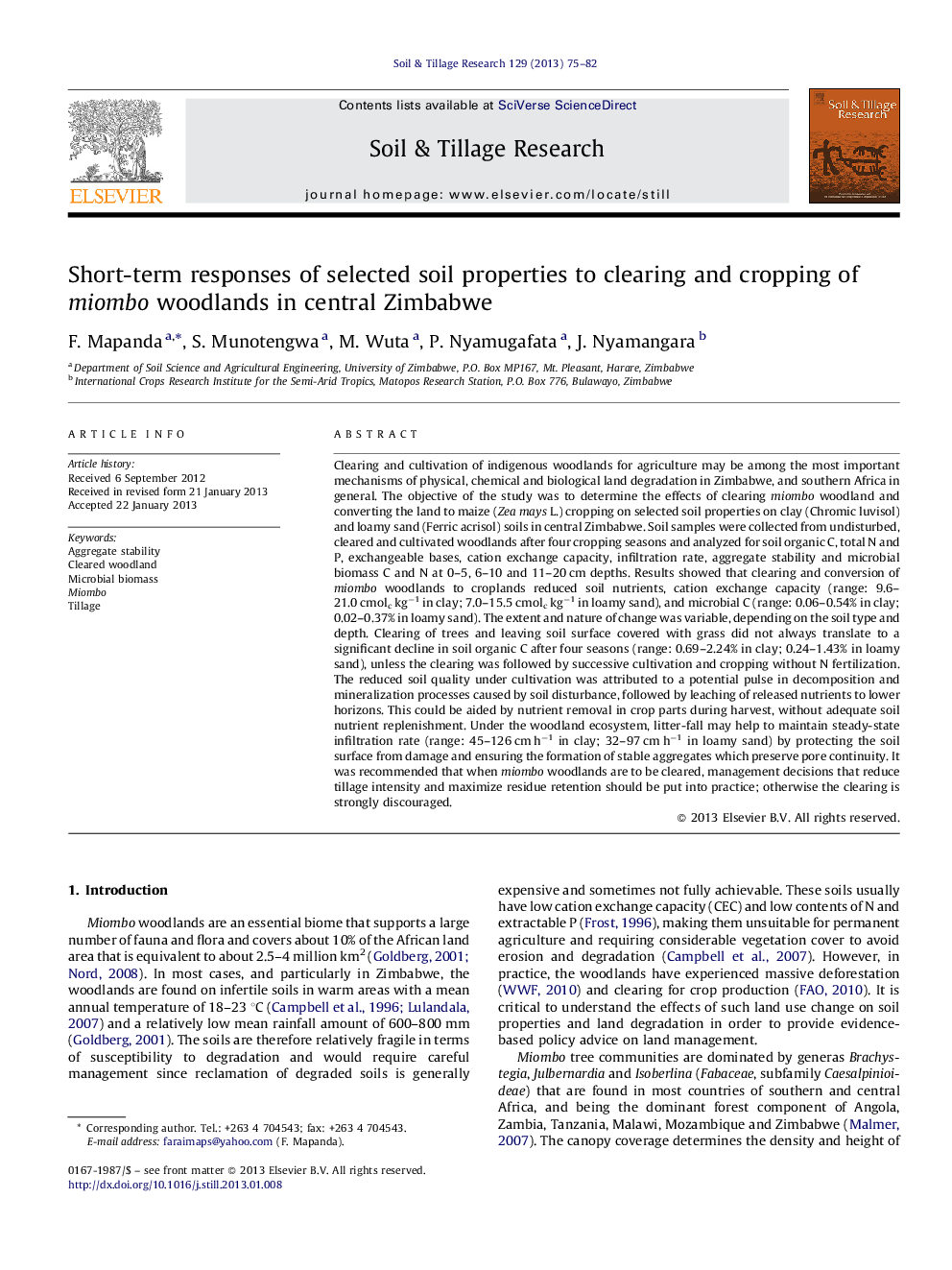| Article ID | Journal | Published Year | Pages | File Type |
|---|---|---|---|---|
| 305874 | Soil and Tillage Research | 2013 | 8 Pages |
Clearing and cultivation of indigenous woodlands for agriculture may be among the most important mechanisms of physical, chemical and biological land degradation in Zimbabwe, and southern Africa in general. The objective of the study was to determine the effects of clearing miombo woodland and converting the land to maize (Zea mays L.) cropping on selected soil properties on clay (Chromic luvisol) and loamy sand (Ferric acrisol) soils in central Zimbabwe. Soil samples were collected from undisturbed, cleared and cultivated woodlands after four cropping seasons and analyzed for soil organic C, total N and P, exchangeable bases, cation exchange capacity, infiltration rate, aggregate stability and microbial biomass C and N at 0–5, 6–10 and 11–20 cm depths. Results showed that clearing and conversion of miombo woodlands to croplands reduced soil nutrients, cation exchange capacity (range: 9.6–21.0 cmolc kg−1 in clay; 7.0–15.5 cmolc kg−1 in loamy sand), and microbial C (range: 0.06–0.54% in clay; 0.02–0.37% in loamy sand). The extent and nature of change was variable, depending on the soil type and depth. Clearing of trees and leaving soil surface covered with grass did not always translate to a significant decline in soil organic C after four seasons (range: 0.69–2.24% in clay; 0.24–1.43% in loamy sand), unless the clearing was followed by successive cultivation and cropping without N fertilization. The reduced soil quality under cultivation was attributed to a potential pulse in decomposition and mineralization processes caused by soil disturbance, followed by leaching of released nutrients to lower horizons. This could be aided by nutrient removal in crop parts during harvest, without adequate soil nutrient replenishment. Under the woodland ecosystem, litter-fall may help to maintain steady-state infiltration rate (range: 45–126 cm h−1 in clay; 32–97 cm h−1 in loamy sand) by protecting the soil surface from damage and ensuring the formation of stable aggregates which preserve pore continuity. It was recommended that when miombo woodlands are to be cleared, management decisions that reduce tillage intensity and maximize residue retention should be put into practice; otherwise the clearing is strongly discouraged.
► Determined soil chemical properties, infiltration, aggregation, microbial C and N. ► Soil quality declined with miombo woodlands clearing and cultivation. ► Cultivation without N fertilization resulted in more decline in soil quality. ► Clearing once without cultivation increased soil organic C due to vigorous coppicing.
